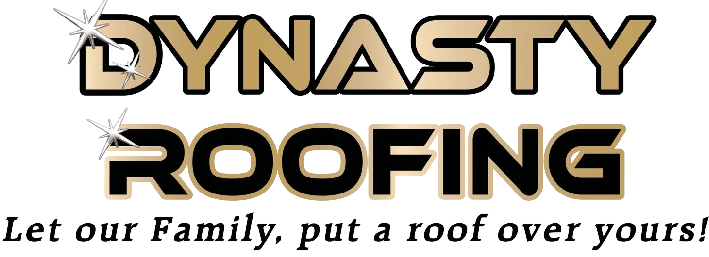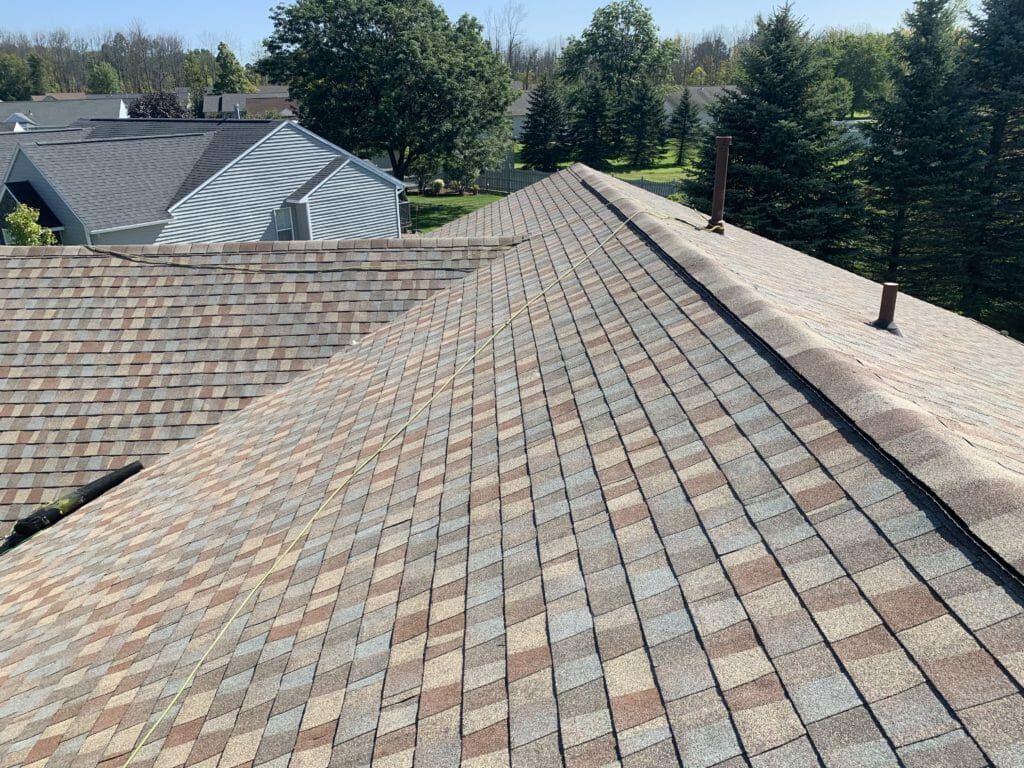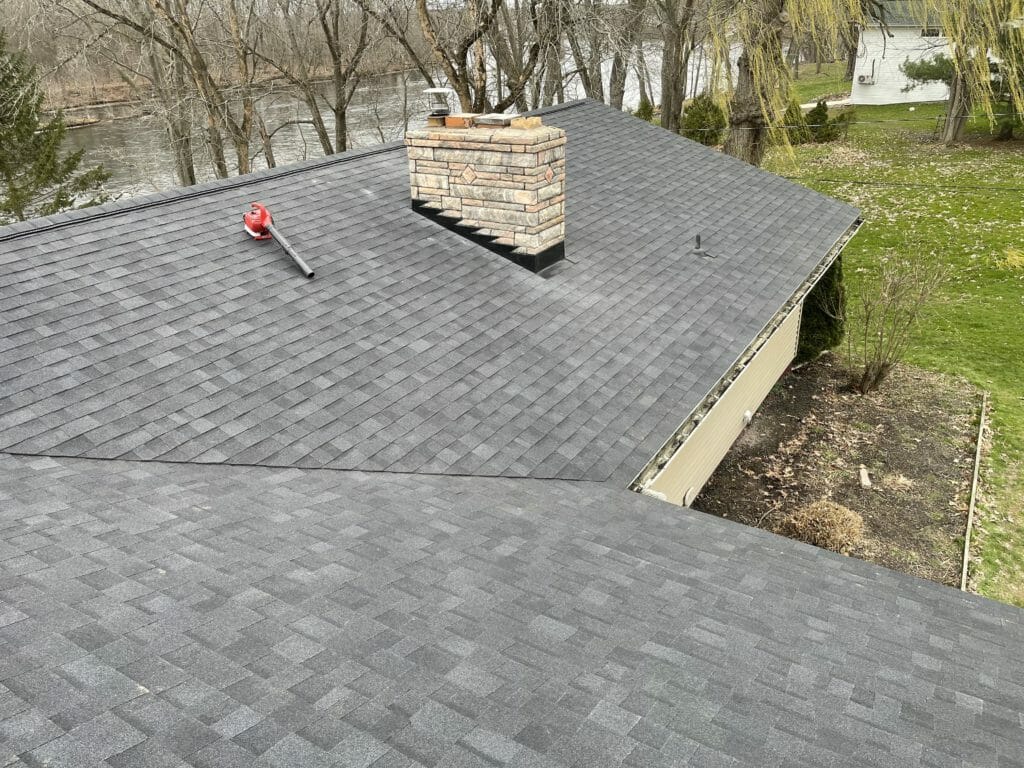Most homeowners in and around Liverpool, NY, see their roof as protection from rain, snow, and sun. However, your roof also affects your indoor air quality and your family’s overall health.
When leaks, damaged shingles, or poor ventilation go untreated, moisture can build up and lead to mold or poor airflow inside your home. Professional roof repair from Dynasty Roofing helps prevent these issues and keeps your home environment clean, safe, and comfortable year-round.
The Direct Line From Your Roof to Your Lungs
Your roof does so much more than block bad weather. It manages moisture, regulates temperature, and helps your home breathe. If it fails, your indoor air quality can suffer, potentially leading to allergies or other respiratory issues.
Moisture Is the Enemy
Even a tiny, dime-sized leak can be a huge problem. Water finds its way into your attic, soaking insulation and drywall. This creates the perfect breeding ground for mold and mildew.
Once mold grows, it releases toxic spores into the air you breathe. A healthy roof with proper moisture barriers and no leaks is critical. Proper roof maintenance is also another great way to stop mold before it ever starts.
How Your Roof Controls Airflow
Does your attic get stuffy and hot? That’s often a sign of poor ventilation. A roof without good airflow from soffit and ridge vents traps heat and humidity, which can lead to condensation.
This moisture fuels mold growth. It also lets allergens and dust mites build up inside your home. Proper ventilation isn’t a luxury but a necessity for healthy indoor air.
Which Roofing Material Is Healthiest for Your Home
Not all roofing materials are created equal regarding your health. Some are far better at resisting things that can make you sick. Let’s look at the most common choices.
| Material | Mold Resistance | Volatile Organic Compounds (VOCs) Risk | Best Climate |
|---|---|---|---|
| Asphalt Shingles | Fair | Moderate (when new) | Mixed |
| Wood Shakes | Low | Low (can be higher with treatments) | Dry |
| Metal | High | Very Low | All Climates |
| Clay/Concrete Tile | Good | None | Hot/Humid |
Asphalt Shingles
Asphalt is the most popular roofing choice in America. It’s affordable and does a great job against rain and wind. But it has a downside for health.
New asphalt shingles can release VOCs, especially on hot, sunny days. Over time, these shingles also shed tiny granules that become dust. If your attic ventilation isn’t great, that dust and any off-gassing can affect your indoor air quality.
Wood Shakes and Shingles
Wood roofs look beautiful and natural. They’re very porous, though. Wood easily absorbs water if it isn’t treated correctly and regularly.
This makes it a magnet for mold, algae, and moss. These growths release spores that can travel into your home, which is a big problem for anyone with allergies or asthma. Some chemical treatments used to prevent rot can also affect air quality.
Metal Roofing
Metal roofs are a fantastic choice for a healthier home. They’re nonporous, so they naturally resist mold, moss, and algae. You won’t find organic matter growing on a metal roof.
Because they reflect heat instead of absorbing it, they keep your attic cooler and drier.
Clay and Concrete Tile
Tile roofs are incredibly durable and great for hot climates. They create a strong barrier against the elements. They do have some health considerations.
In damp climates, moss and algae can grow between the tiles. The heavy weight can also trap moisture underneath if ventilation is poor. This leads to hidden condensation and potential mold issues, so expert installation by a qualified roofing contractor is a must.
A Warning About Older Roofs: The Danger of Asbestos
If your home was built before the 1980s, your roof could contain asbestos. This was a common material in old shingles, felt, and cement roofing. Asbestos is extremely hazardous when its fibers are disturbed and become airborne.
Inhaling these fibers can potentially lead to serious diseases, including lung cancer and mesothelioma. Never try to remove an old roof yourself if you suspect it contains asbestos. Always hire a certified professional for a roof inspection and abatement.
How Your Local Climate Affects Roofing Materials
Your location plays a huge role in what makes a roof healthy. What works in a dry desert is a bad idea in a humid, rainy area. A good roofer considers your local climate first.
Hot, Dry Areas
In places where the sun beats down all year, the biggest threat is heat. Overheated attics strain your AC and dry out the air. This kicks up dust mites and other allergens.
Light-colored metal or special cool-roof shingles are great here. They reflect sunlight to keep the attic temperature down.
Hot, Humid Areas
Humidity is the main problem in climates like Florida’s. Mold and mildew can grow almost anywhere. Your roof has to be an expert at managing moisture.
Tile and metal roofing systems are ideal because they resist organic growth. Pairing them with a high-quality, mold-resistant underlayment is also smart. Good flashing and lots of ventilation are not optional in these regions.
Mixed Climates With Cold Winters (Like Upstate New York)
Homes in areas with four distinct seasons face a special challenge: ice dams. Snow melts and refreezes at the edge of your roof. This forces water back up under the shingles.
This water then leaks into your attic, creating hidden mold. This is why building codes in colder areas require a special ice and water shield. It is a waterproof membrane that gives an extra layer of protection.
What To Look For: Signs Your Roof Is Affecting Your Health
How do you know if your roof is the source of your problems? Your home often gives you clues. You just have to know where to look.
A professional roof inspection can identify hidden issues, but you can spot some warning signs yourself. Outside, check for dark streaks on your shingles, which often mean algae is growing. Look for cracked flashing around chimneys or clogged gutters full of debris, as these are signs that water isn’t draining correctly.
Inside, the biggest red flags are musty smells and visible water damage. Some other signs include:
- A persistent musty odor, especially in the attic or top-floor closets.
- An unexplained increase in allergy symptoms or respiratory issues at home.
- Peeling paint near the roofline.
- Yellow or brown stains appearing on ceilings or walls.
The Centers for Disease Control and Prevention notes that symptoms like constant sneezing or congestion at home can be a sign of mold exposure. If you notice these issues, it’s time to investigate your roof’s condition.
Our Conclusion
Your roof does more than protect you from the weather. It’s an essential part of your home’s health and safety, guarding both your structure and your family. Understanding how roofing materials affect indoor air quality is a crucial step toward maintaining a healthy home in Liverpool, NY.
By selecting materials that suit the local climate and scheduling regular roof inspections or roof repairs with a trusted contractor like Dynasty Roofing, you can prevent costly issues and enhance the air your family breathes. In the end, a well-maintained roof keeps your home comfortable, energy-efficient, and healthy for everyone who lives under it.





